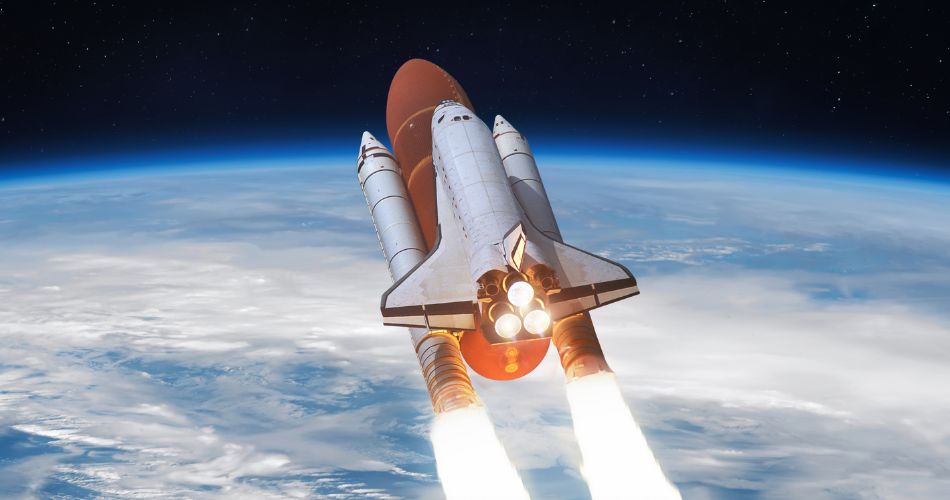Space Exploration Day is celebrated every July 20, commemorating the historic moment when humanity stepped onto the Moon for the first time. In 1969, Apollo 11 astronauts Neil Armstrong and Buzz Aldrin touched down on the lunar surface—a milestone that redefined our collective ambitions and reinforced our drive to explore the cosmos .
History of Space Exploration Day
The roots of this observance trace back to July 20, 1969, when NASA’s Apollo 11 mission achieved the first crewed lunar landing. Neil Armstrong’s iconic phrase, “That’s one small step for [a] man, one giant leap for mankind,” resonated with over a billion people watching worldwide.
In 1984, U.S. President Ronald Reagan officially proclaimed July 20 as Space Exploration Day (also called National Moon Day), recognizing Apollo 11’s achievement and aiming to inspire interest in space science, exploration, and careers in STEM fields. This day has since become a global celebration of both that pivotal moment and the broader human quest for knowledge beyond Earth.
The Space Exploration Initiative: A Bold Dream for the Future

On July 20, 1989, as the world paused to remember the first human steps on the Moon exactly two decades earlier, President George H. W. Bush stood on the steps of the Smithsonian National Air and Space Museum and looked boldly toward the future. Flanked by the legendary Apollo 11 astronauts, he announced an ambitious vision for America’s next great leap in space: the Space Exploration Initiative (SEI).
With the spirit of explorers past—from Columbus to the pioneers of the Oregon Trail—Bush invoked the legacy of human adventure and frontier-chasing. But this time, the new frontier was not across oceans or plains—it was beyond Earth itself. The SEI was to be a long-term, monumental effort. The goals? Build Space Station Freedom, return humans to the Moon, and finally, carry out a manned mission to Mars. Unlike the race-to-the-Moon urgency of the Apollo era, Bush’s SEI wasn’t driven by crisis, but by opportunity—a chance to shape a future where America would lead humanity deeper into the cosmos. He called this vision “a journey into tomorrow,” and tasked Vice President Dan Quayle with leading the newly formed National Space Council to figure out what such a journey would truly require—in funding, manpower, and technology.
Following the announcement, NASA Administrator Richard Truly mobilized a team led by Aaron Cohen, director of Johnson Space Center, to conduct a deep-dive analysis. By November 1989, the team delivered what came to be known as the “90-Day Study.” Its conclusion was staggering: achieving the SEI’s goals could cost upwards of $500 billion over 20 to 30 years. That number sent shockwaves through the halls of government. Though the National Academy of Sciences reviewed and largely agreed with NASA’s findings, both Congress and many inside the White House balked at the sheer scale and price of the vision. Political will quickly fade. Even attempts to gather international partners for shared investment couldn’t rescue the proposal from skepticism and sticker shock.
In response, President Bush appointed a high-level advisory body led by aerospace executive Norm Augustine to assess the future of U.S. space efforts. The resulting Augustine Report, published in December 1990, urged NASA to refocus on science—especially space and Earth science—and adopt a more realistic, pay-as-you-go approach for human exploration. Bush accepted the advice, effectively cooling ambitions for near-term human missions to Mars.
The arrival of Dan Goldin as NASA Administrator marked a sharp pivot. Under his leadership, NASA embraced the now-famous “faster, better, cheaper” model, shifting emphasis toward robotic exploration and scientific missions. Human exploration beyond Earth orbit was quietly shelved. By 1996, under President Clinton, the new National Space Policy made it official: human space exploration was no longer on the U.S. national agenda.
Thus, a sweeping dream born on the anniversary of the Moon landing—one that had imagined astronauts walking on Mars—was grounded by budget fears and political caution. The SEI remains a powerful symbol: a bold, though ultimately unrealized, declaration that the stars still call to us, and that the spirit of exploration is a fire we must keep alive. 1
Why Space Exploration Day matters
At its core, Space Exploration Day is a tribute to human curiosity and perseverance. That single lunar touchdown represented not just technological prowess, but also collective vision, determination, and international inspiration. It reminds us what’s possible when humanity unites behind bold, shared goals.
The day also acts as a beacon for the future: it encourages youth and adults alike to cultivate wonder and pursue scientific paths. From remote telescope viewings to the promise of Mars colonization, this celebration reinforces the notion that space exploration drives innovation, education, and global progress.
- It honors the moment our species first set foot on another world
- It inspires young people to pursue careers in STEM
- It highlights exploration as a vehicle for scientific advancement
- It celebrates past achievements and future dreams beyond Earth
- It reminds us of the collaborative spirit behind space missions
How to observe Space Exploration Day
You don’t need a rocket to mark this day—just curiosity and creativity. Visit a planetarium, space museum, or observatory to immerse yourself in space history and science. Many institutions host special events on July 20, including talks, model rocket launches, and interactive displays.
At home or school, organize stargazing nights using apps and telescopes to identify stars, planets, or the Moon. Watch documentaries like Apollo 11, stream live astronaut chats, or schedule a family movie night with classics like The Martian or Interstellar. These experiences connect us to the ongoing adventure of space in accessible and memorable ways.
- visit a space museum, planetarium, or observatory
- host a stargazing or telescope‑viewing night
- stream an astronaut talk or space exploration documentary
- watch a space‑themed film and discuss its impact on our vision
- launch a model rocket or attend a rocket workshop
Space Exploration Day Dates Table
| Year | Date | Day |
|---|---|---|
| 2025 | July 20 | Sunday |
| 2026 | July 20 | Monday |
| 2027 | July 20 | Tuesday |
| 2028 | July 20 | Thursday |
| 2029 | July 20 | Friday |
Subscribe to our newsletter and never miss a holiday again!

